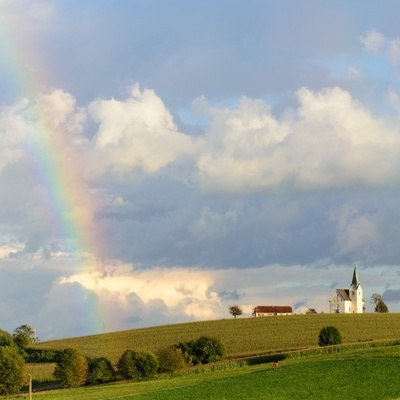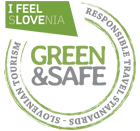The trail, presenting the Ponikva karst area, is dedicated to an excellent Geologist and Professor from Ponikva, Stanko Buser, PhD. The signposts contain a sign with Pironaea buseri, one of the five fossils named after him.
The trail starts in front of the Memorial Park with a modernised water sink, with a fountain placed where a water sink for feeding livestock used to be, and proceeds behind the Church of Saint Martin, where you can see a wooden well. There are many of them in the Ponikva area, indicating that the supply of drinking water used to be difficult. Passing a cemetery, you will see on your left a plant purification device that purifies wastewaters, and was the first of its kind in Slovenia.
To the right under the hill of Saint Oswald, there is the source of the Meklen brook, where women used to do laundry, and is, therefore, called Periše (washing area). By the road, you can see two karstic sources, a permanent and a periodic, which supply from swallow holes – swallets at Mlakarjeve Rupe. The site of the pasque flower in Boletina is part of the protected area of Natura 2000, and one of the most popular destinations on the outskirts of Ponikva. A good hundred
metres further on, you can admire water disappearing into the depth of swallow holes – swallets, that give Ponikva its name.
At the hayrack next to the Šmid Wine Cellar, where you can also fill up your empty stomach, you can enjoy a nice view of the dry karstic valley, and, if the weather is nice, also the Kamnik-Savinja Alps. The Šmid well is situated on a steep karstic slope, and is interesting because of its cave with stalactites at a depth of 4 metres. The trail continues to the birth house of Stanko Buser, PhD, and ends circularly through the forest to the road that leads back to Ponikva.







